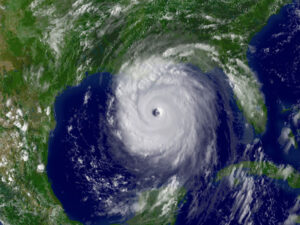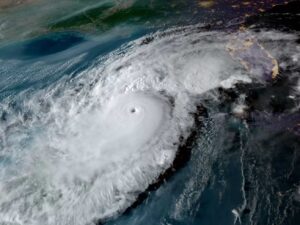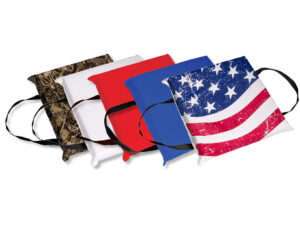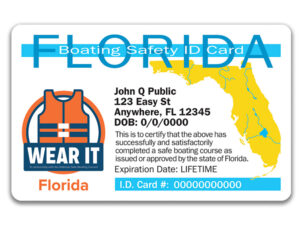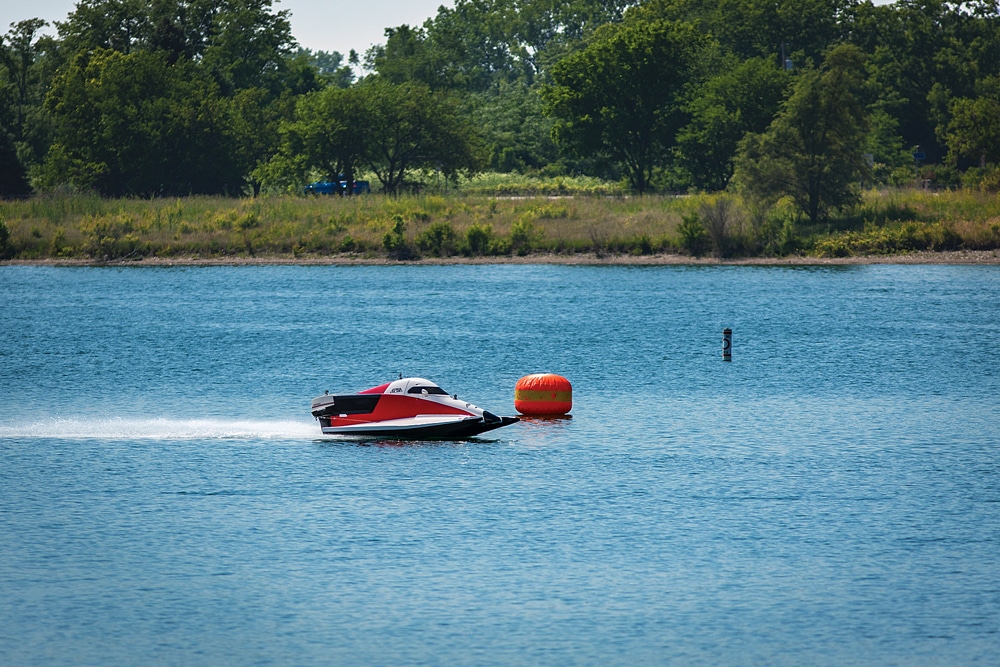
Become a Better Boater at Boat Racing School
The cockpit was tinier than I thought. As the team tightly buckled me into my safety harness, I took a deep breath and tried not to mind the squeeze of the capsule against my shoulders — or the fact that the water seemed startlingly close to eye level.
This was a safety check for driving a racing powerboat, so I ignored my discomfort and focused on what I would need to do in the event of a capsize. I practiced releasing the steering wheel, and I yanked the Velcro tab that would set me free from the puzzling web of belts and buckles binding me to my tiny craft.
My coaches nodded. Now it was time for the ultimate safety test.
They flipped me upside down.
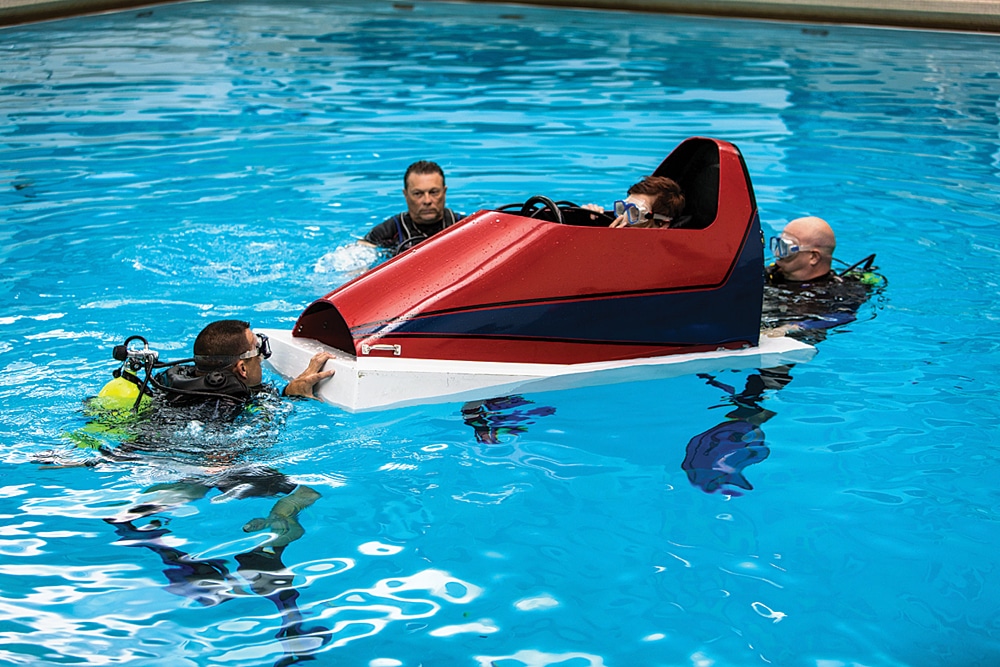
Become a Better Boater at Boat Racing School
So You Wanna Go to Racing School
This was my dramatic introduction to the American Power Boat Association’s (APBA) Driving School, held in Dayton, Ohio. As soon as I landed, I was dashing off to a 6 p.m. appointment at the Wright State University Student Union swimming pool for capsule training.
I had no idea what to expect. When I was growing up, my father raced vintage cars and attended the esteemed Skip Barber Racing School in Elkhart Lake, Wisconsin. He always said that learning how to drive a race car made him a better driver, period. So I was curious: If I learned to drive a racing boat, would that affect my performance at the helm of a recreational powerboat?
The perfect opportunity presented itself courtesy of Tammy Wolf, one of the top female powerboat racers in the United States. I’d mentioned to her that I was fascinated by the boats she drives; Outboard Performance Craft (OPC) are capable of speeds faster than 140 miles per hour and can pull 5 G’s in the turns. Wolf told me to go to Dayton.
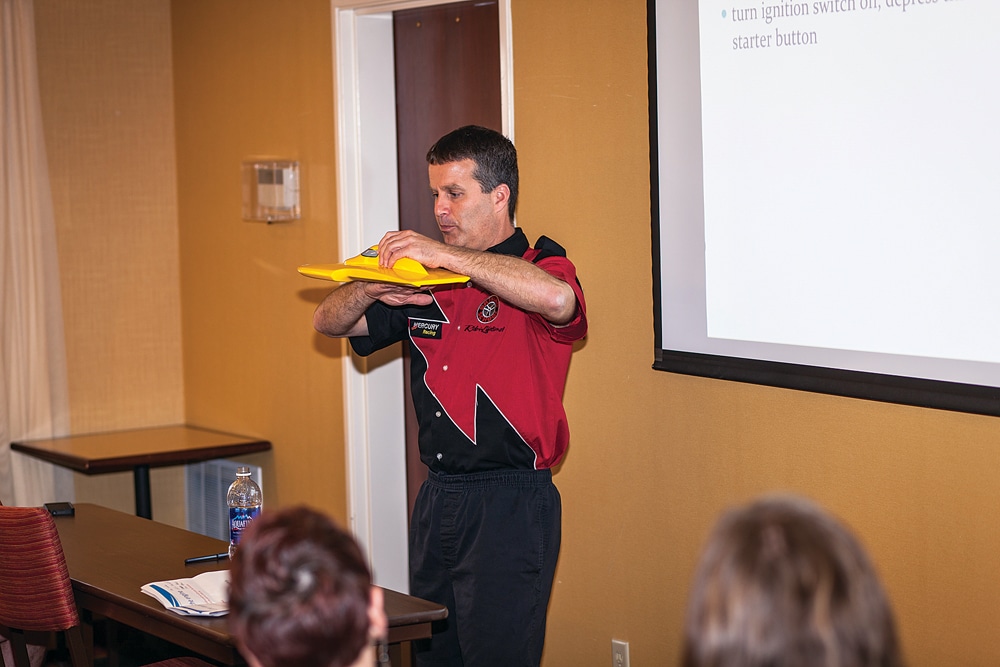
Become a Better Boater at Boat Racing School
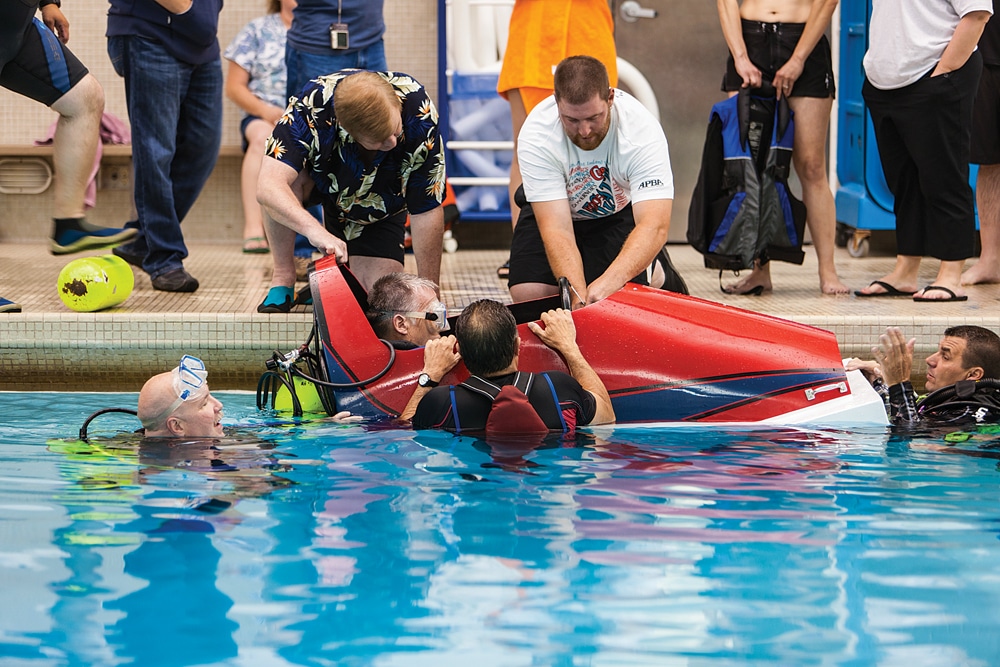
Become a Better Boater at Boat Racing School
Founded in 1903, the APBA is the U.S. sanctioning authority for the Union Internationale Motonautique, the world-governing body for powerboat racing. It’s based near Detroit and sanctions races in 14 categories, which include Unlimited Hydroplanes, Inboards, Stock Outboards and OPC. The organization started offering its driving school in 2010; all experience levels are welcome, so off I went. Into the training capsule.
The capsule is little more than a seat with extra flotation, but it mirrors the cockpit of a real racer. And boats do occasionally capsize, so a driver needs to know how to self-rescue: Pop off the wheel, release the safety harness, and then swim out and up to safety.
Our capsule resembled that of a 5-liter hydroplane, which most of the students would be driving. Because those cockpits are open-air, the helmets have built-in regulators. So, in capsule training, we each used a scuba regulator that would allow us to continue breathing while extricating ourselves.
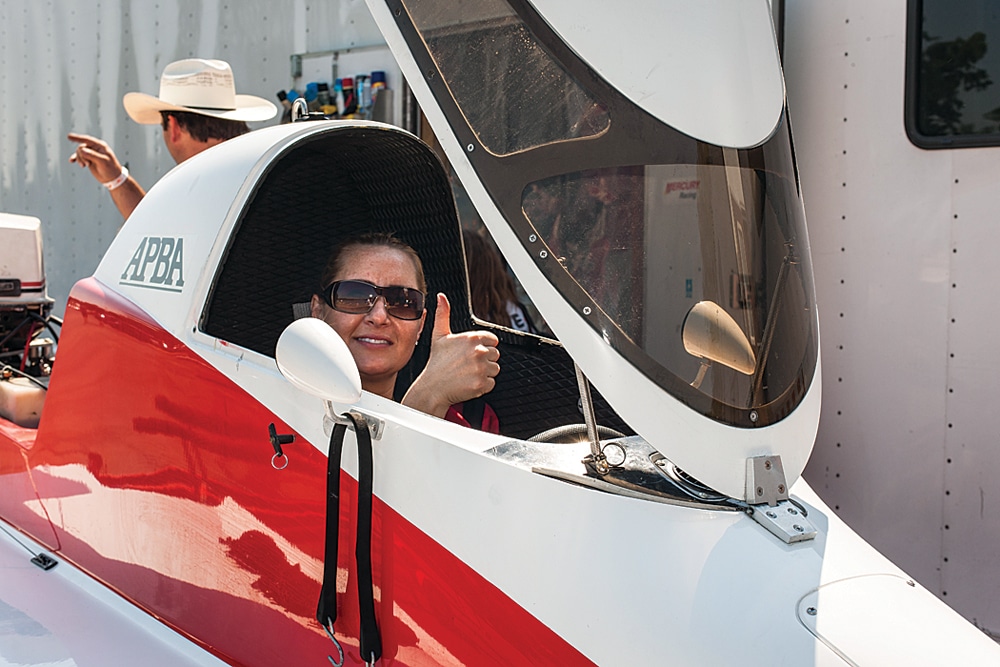
Become a Better Boater at Boat Racing School
In contrast, an OPC cockpit is enclosed, so there is no compressed air for the driver. Instead, he or she must wait for the cockpit to partially fill with water to depressurize the space, then unlatch the hatch cover and pop it open.
“Now remember,” one of the coaches said, “just hang there for a few seconds. Slow down; breathe. Don’t panic. You have plenty of air and plenty of time.”
I put one hand over my dive mask and the reg, and then everything went blue. I sat briefly, focusing on the wheel before I popped it off its pedestal. I grasped the tab to release the safety harness, and then I was free. The entire process took about 28 seconds.
I received my capsule training certificate and soggily made my way back to the locker rooms, stomach lurching as I considered the real race day to come. But first we had to go to class.
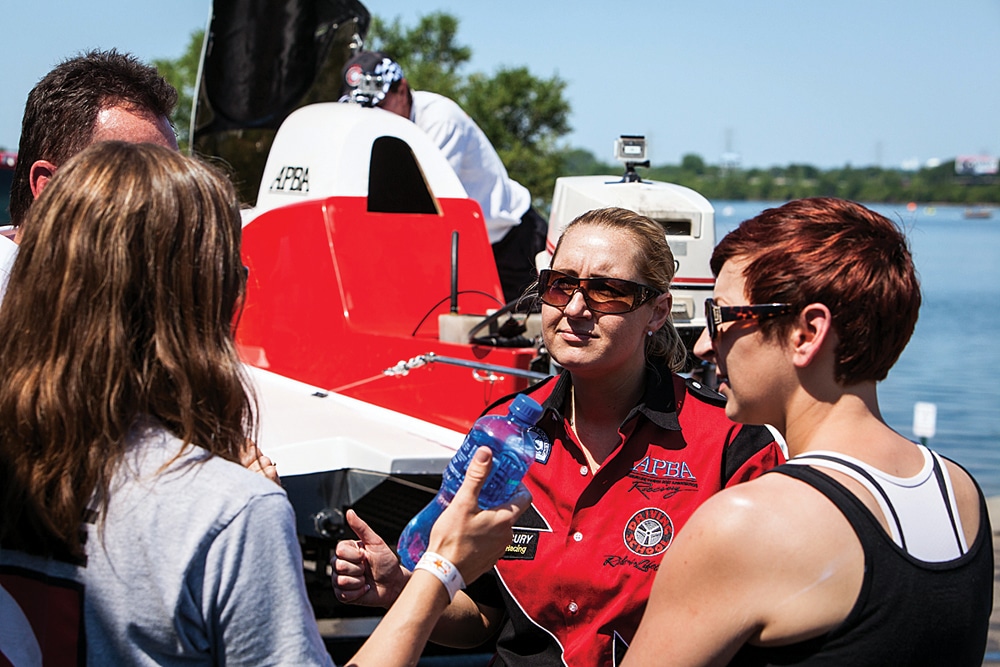
Become a Better Boater at Boat Racing School
Racing, On Paper
In the morning, our 22-member class convened for classroom work. On hand were Dan Kanfoush and Chris Fairchild, accomplished drivers with world-class experience in the 5-liter Hydroplane and OPC categories; Wolf also was there, as was Mark Weber, a renowned third-generation racer, his wife, Lori, and Adam Allen, OPC class chairman. First lesson: understanding the ride.
A tunnel boat’s hull has two sponsons that form a sort of über-funnel, allowing the boat to skim across the water on a cushion of air. And Outboard Performance Craft pack more air than hydroplanes. They can go from zero to 100 miles per hour in six seconds and whip through a precise 180-degree turn at high speeds.
How can a boat corner like this on rails? A tunnel boat has trim tabs, which allow the driver to trim up for blazing straightaways and trim down for almost impossibly tight turns. Hit the down button so the gear box bites into the water, and get ready for those instantaneous G’s.
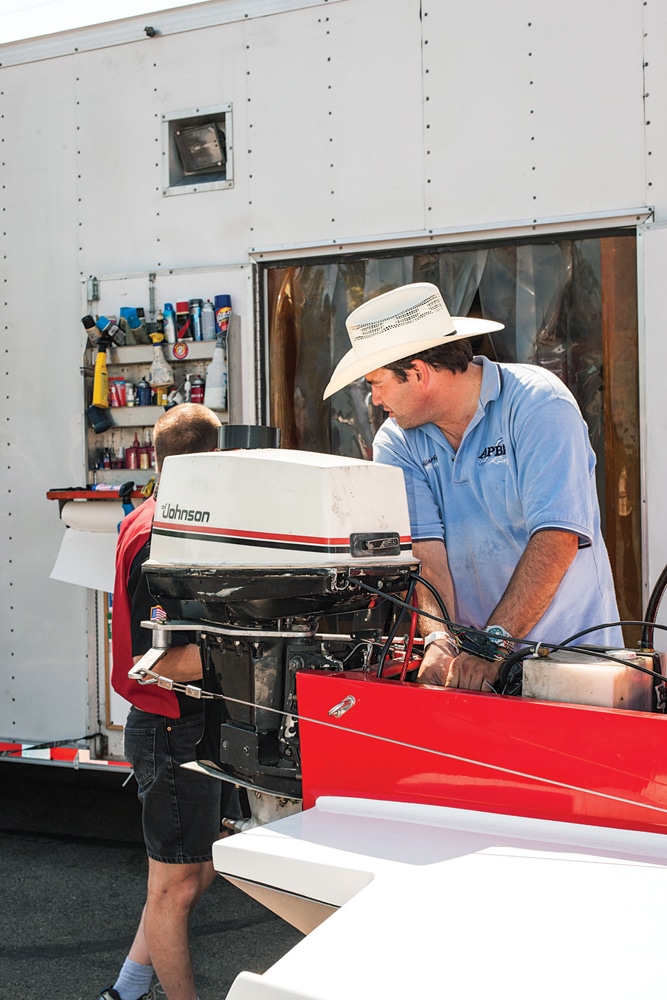
Become a Better Boater at Boat Racing School
Tunnel boats are susceptible to strong winds and seas. You can catch too much air, which Fairfield emphasized is not a good thing.
“If the horizon disappears,” Fairchild advised, “hit the ‘down’ button and get the air out of the tunnel. And never, ever trim up while you’re turning.
“But if you do wreck,” he added brightly, “enjoy the ride!”
After class, we headed to Dayton’s Eastwood MetroPark, where a variety of racing craft were already tearing up a 1.25-mile inboard course. We tried on multiple-layer racing suits and Snell-approved helmets and then wandered over to the pit. I couldn’t take my eyes off our tunnel boat, a red and white, 12-foot-long SST45.
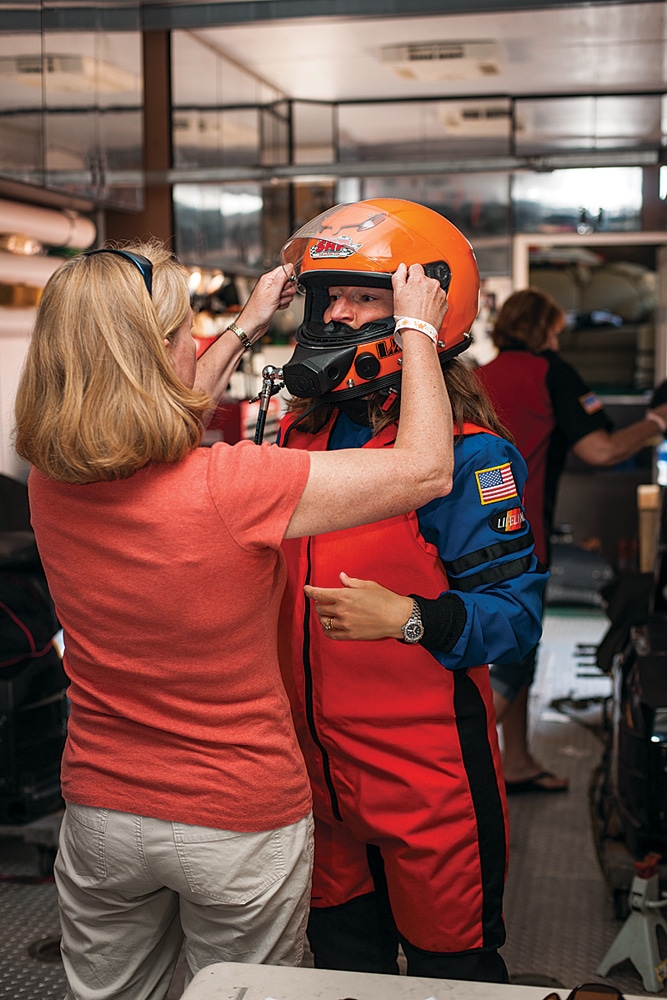
Become a Better Boater at Boat Racing School
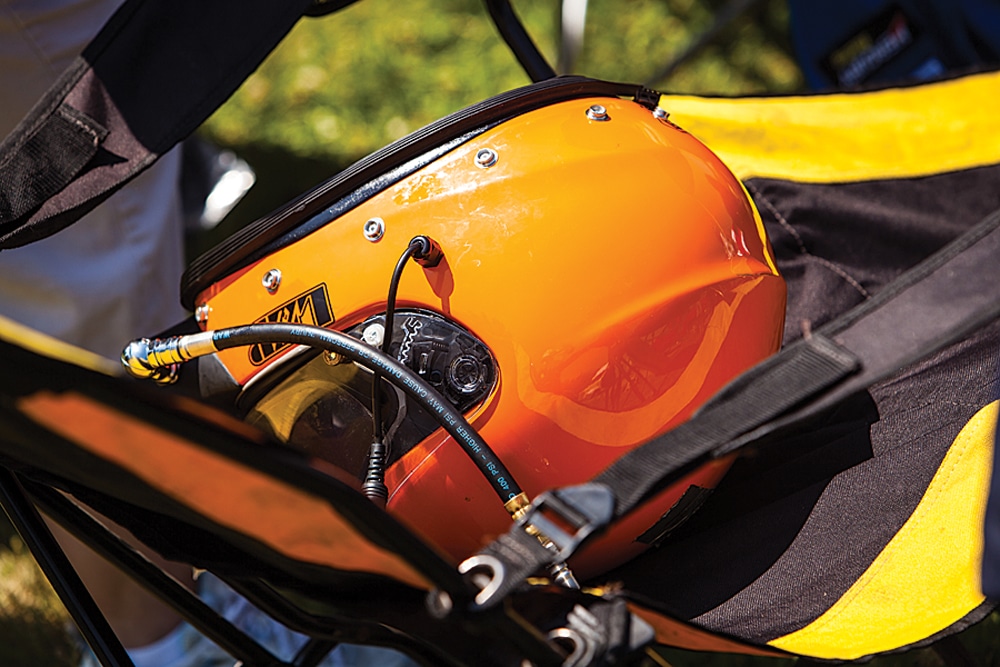
Become a Better Boater at Boat Racing School
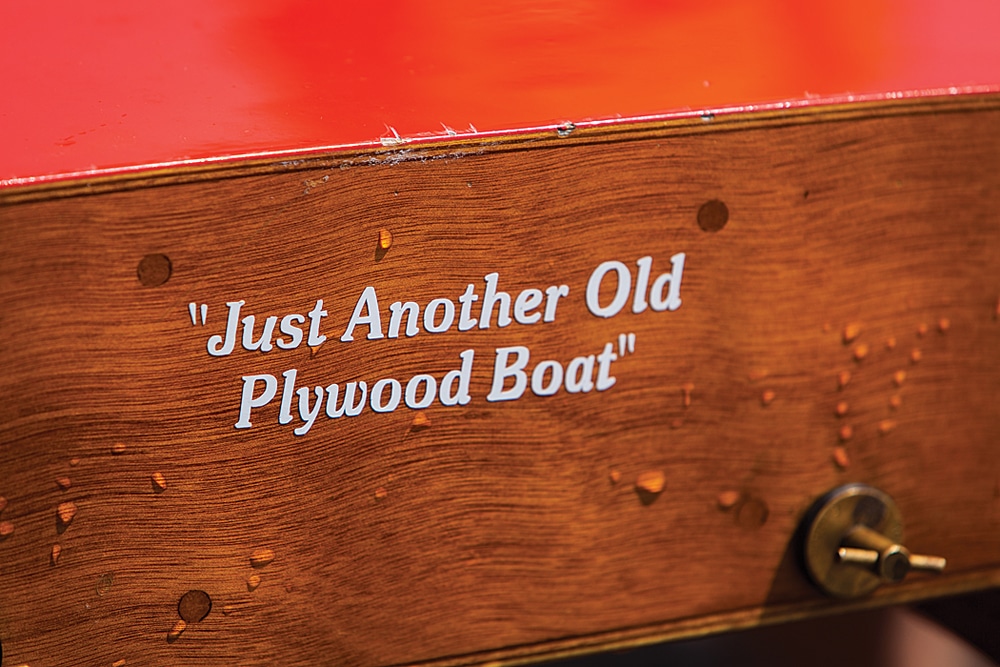
Become a Better Boater at Boat Racing School
Known as a Formula Light, the SST45 is part of a highly competitive class that spars nationwide. Drivers consider it to be a great step up from outboard kneel-down categories and a solid training ground for larger V-6 tunnel boats. An ideal student boat, the SST45’s range is 60 to 70 miles per hour with an OMC 740 cc two-cylinder engine. It pulls about 1.5 G’s in a tight turn.
My turn arrived in the late afternoon. Suiting up on this unseasonable 90-degree day, I could feel rivulets of sweat trickling down my neck and back. Wolf helped me clamber into the cockpit, which seemed even smaller now that I resembled a balloon animal. Sweltering, I tried to avoid hyperventilating as Wolf winched me into the safety harness.
My hands could grasp the wheel, my thumbs could reach the trim tabs from the 10-and-2 positions, and my right foot could find the gas pedal. Then the hatch came down, enclosing me in a breathless space that was better suited to a Star Wars movie than a sunny springtime lake. Warp speed ahead.
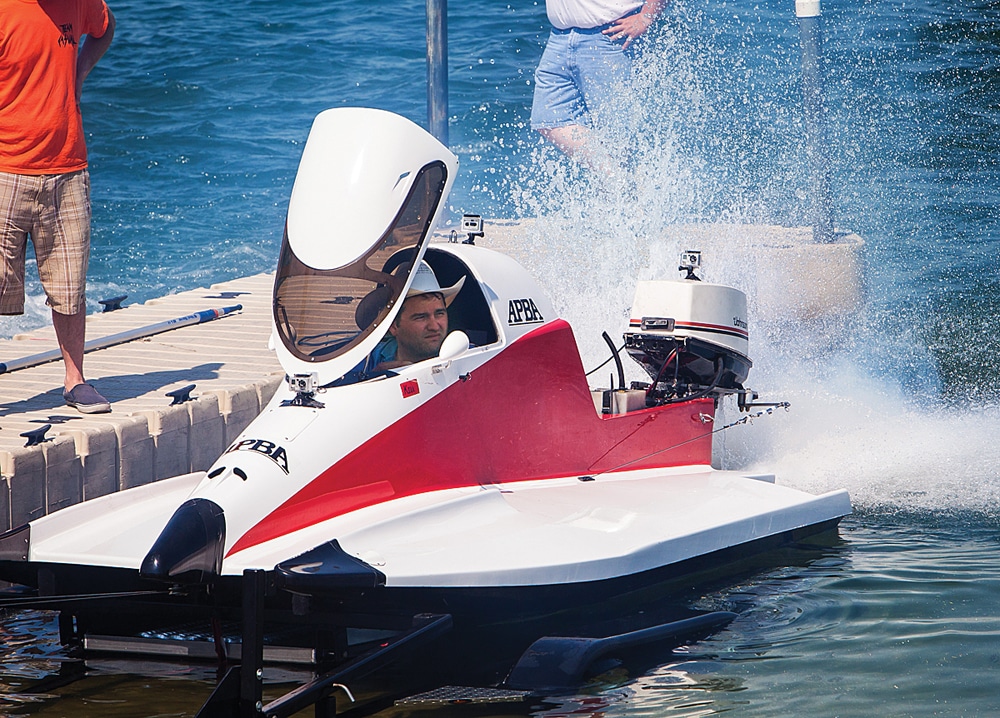
Become a Better Boater at Boat Racing School
The Need for Speed
The trailer backed down the ramp. Wolf, Fairchild and the support crew were dockside, spinning the boat around to face the course. I got an encouraging smile from Wolf, who was manning the radio.
“Go for it!” her voice called cheerfully inside my helmet.
I made sure the engine was trimmed down and the steering wheel was straight, and then I hit the start button and lightly touched the throttle.
I promptly forgot my nerves and claustrophobia. All that was left in the world was the throaty rumble of the outboard, the view out the tiny cockpit windows and the thrum of the wheel in my hands. I rounded the markers at the east end of the course and, with my heart in my mouth, trimmed up and pressed the gas pedal.
The boat didn’t leap out of the hole. Instead, it hummed, steadily accelerating and sliding across the flat water, faster and faster. All too soon, the west-end marker loomed, so I trimmed down gingerly, unsure of what to expect. The turn wasn’t very tight, but I could feel the pressure in my right shoulder as the boat swung to port. Aha.
I trimmed up coming out of the turn, and the boat started to bounce, porpoising on the slightly wind-riffled lake. So I trimmed up a bit more to allow more air into the tunnel. The boat lifted and leveled off as I carefully monitored the lone dashboard gauge — a homemade gizmo with red and white tape to indicate degrees of trim. Too far into the red, and we’d be airborne. In the not-good way.
By the fourth or fifth lap, I hit my stride. Hearing Wolf’s cheers in my helmet and relaxing my white-knuckle grip on the wheel, I floored the gas on the straightaway and trimmed up to a mark she’d made on the gauge. And I let her coach me through the turns, staying on the gas around the markers and letting the trim do the work.
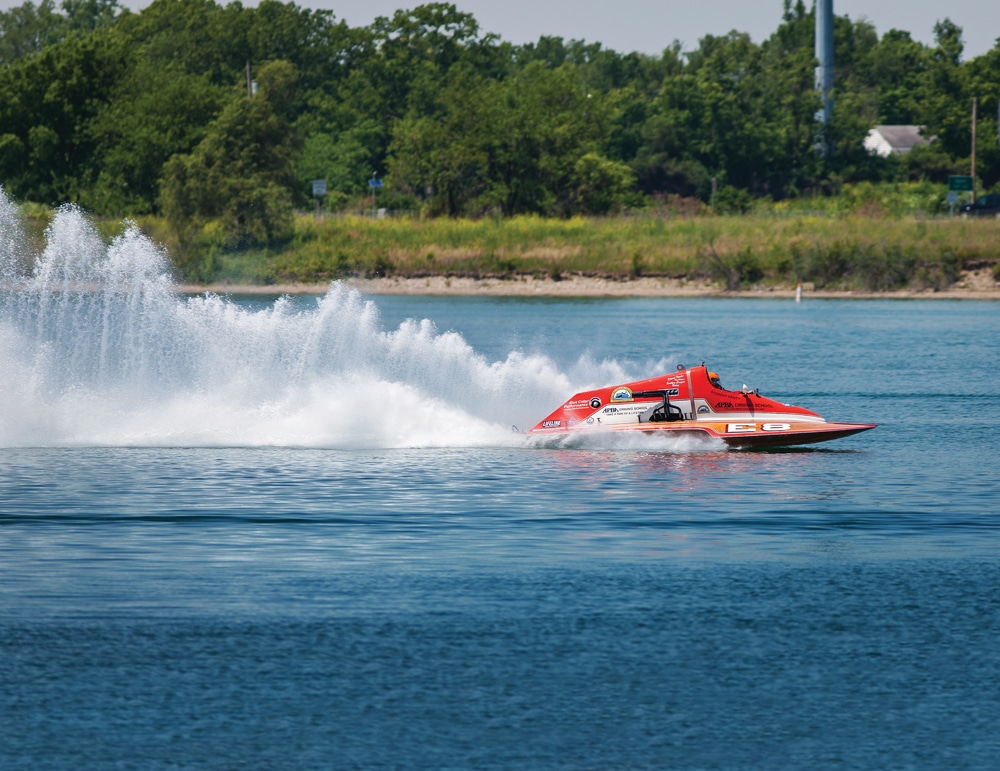
Become a Better Boater at Boat Racing School
All too soon, my 10 allotted laps were finished. I motored to the school’s dock and cut the engine.
“Look at that smile,” Wolf said, beaming, as she helped me out of the cockpit. “That was awesome.”
It was. Every highway-to-the-danger-zone moment of it. I wanted to do it again.
Allen, the OPC chairman, reminded me that racing is a lot more accessible than most people think. A complete rig with boat and trailer runs between $4,000 and $10,000; however, APBA members also may take advantage of a leasing program that provides boat, fuel and all support services at a weekend race for about $750. Sold.
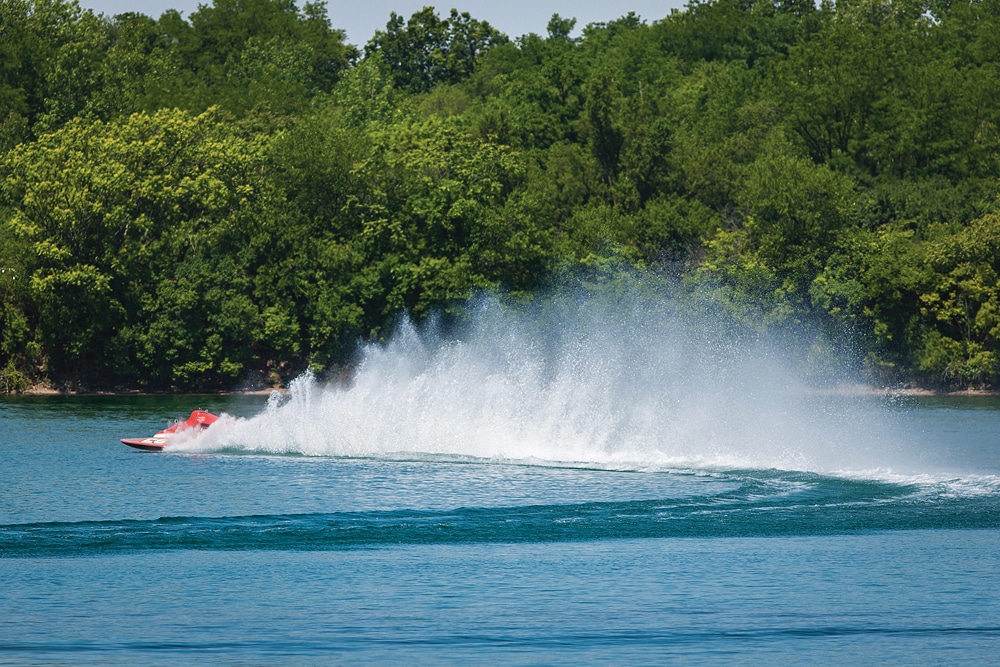
Become a Better Boater at Boat Racing School
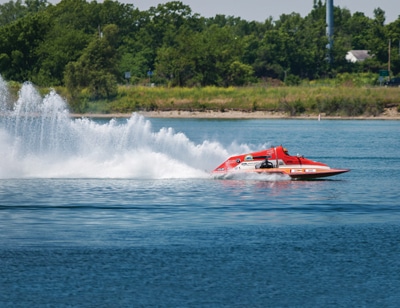
The Real World
There’s no doubt that learning to drive a tunnel boat can make you a better driver aboard your own boat. It’s extraordinarily responsive, so you immediately feel as if you’re making unnecessary or jerky movements. Going swimming is always a possibility, so you learn to read the water and pay attention to every detail. You have your safety procedures down pat, and you fine-tune your focus, because your attention cannot wander. But there’s something else.
When I got off the water, I asked Wolf how fast she thought I’d gone during some of my straightaway runs. After all, there was no speedometer on board.
“Oh, I’d say 65 or 70,” she said. She paused, studying my Cheshire cat smile, and then sagely added, “It’s like a drug, isn’t it? You try it, and then you want more. You want your next fix.”
No kidding. It’s a learning experience, to be sure, especially once you understand that 65 mph feels way faster in a boat than in a car. And more dangerous. But, when done right, it’s also a hell of a lot more fun.
What You Can Learn from Driving an OPC Tunnel Boat
Know your boat. A serious boater doesn’t just turn the key and go. Be familiar with all your equipment, and understand what your boat was designed (and specifically not designed) to do.
You’re leaving the dock, not blasting off. Come on, don’t floor it. You’ll kick up a rooster tail and look like a jerk. Throttle up smoothly and deliberately; everyone at the dock will thank you.
Boats don’t like jerky movements. Instead of constantly yanking on the wheel, make small corrections and remember the throttle thing — smooth and deliberate.
Relax the death grip. If you’re not in a tight turn or a gnarly waterway, you won’t need it. Feel the wheel beneath your fingers, and let the boat tell you what it needs.
Watch the water. Look for signs of excess wind, strong currents and snarky seas in your path to ensure that you’re prepared when you reach them — or they reach you.
Focus. Your attention cannot wander when you’re careening across the water at high speeds. Not even for one second.
No good comes from panicking. In the event of an accident, remain calm and think through each step to resolve the situation. Safety procedures should be second nature.
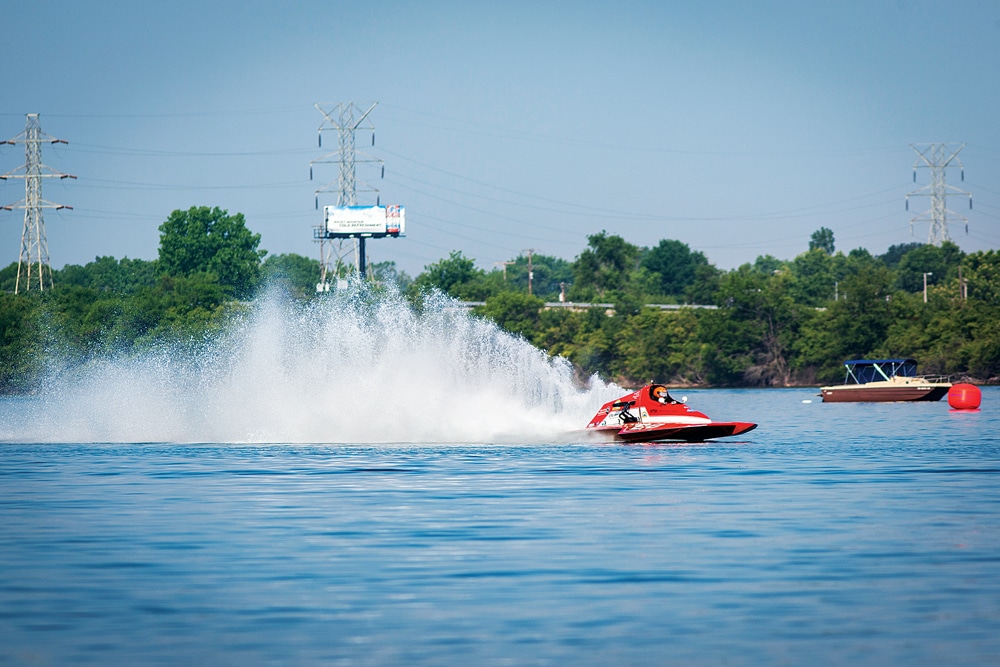
Become a Better Boater at Boat Racing School
OPC Driver School and Racing Events
To learn more about the OPC Driver School and summer racing events, call 734-502-6476 or send e-mail to opcdriversschool@gmail.com. For information about the American Power Boat Association, call 586-773-9700, send e-mail to apbahq@apba-racing.com or simply visit apba-racing.com or apba-racing.com/getting-started.

